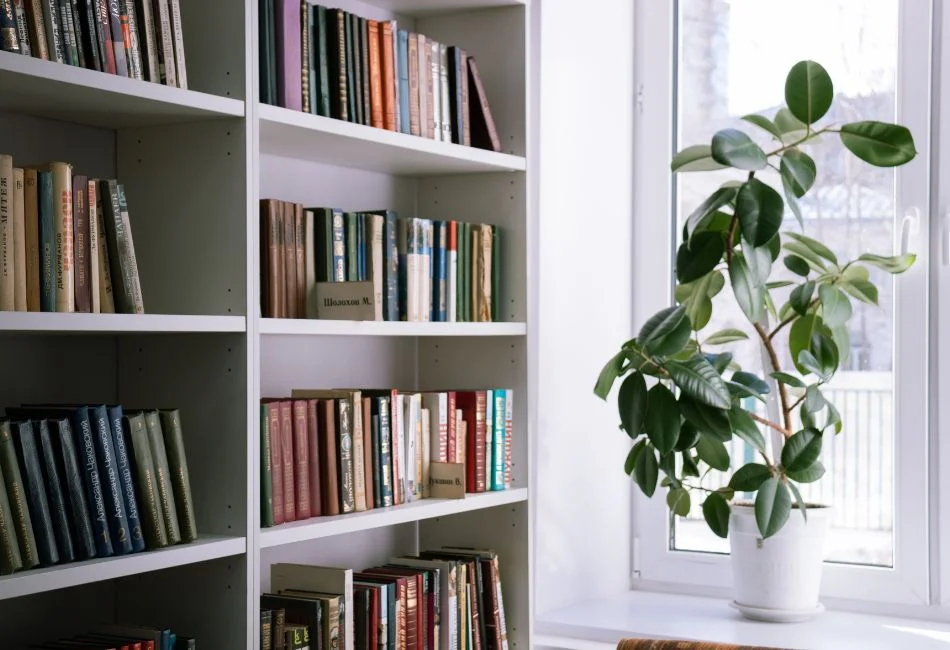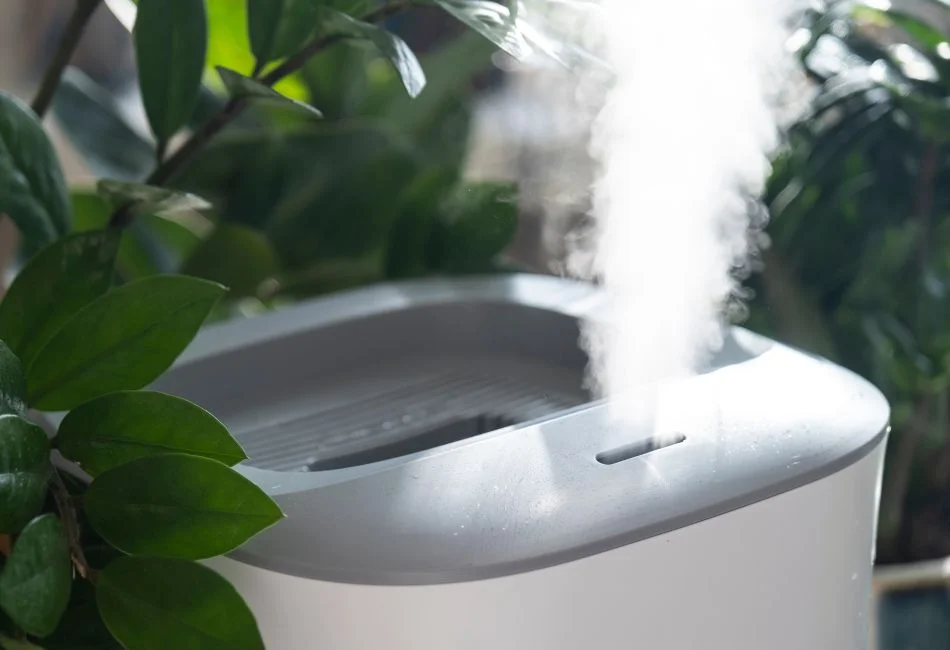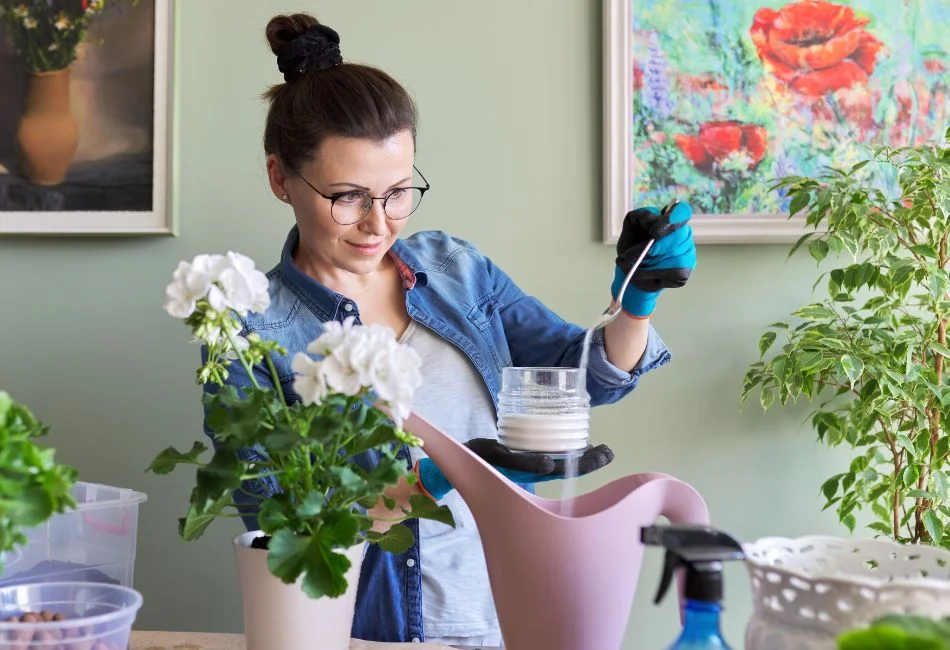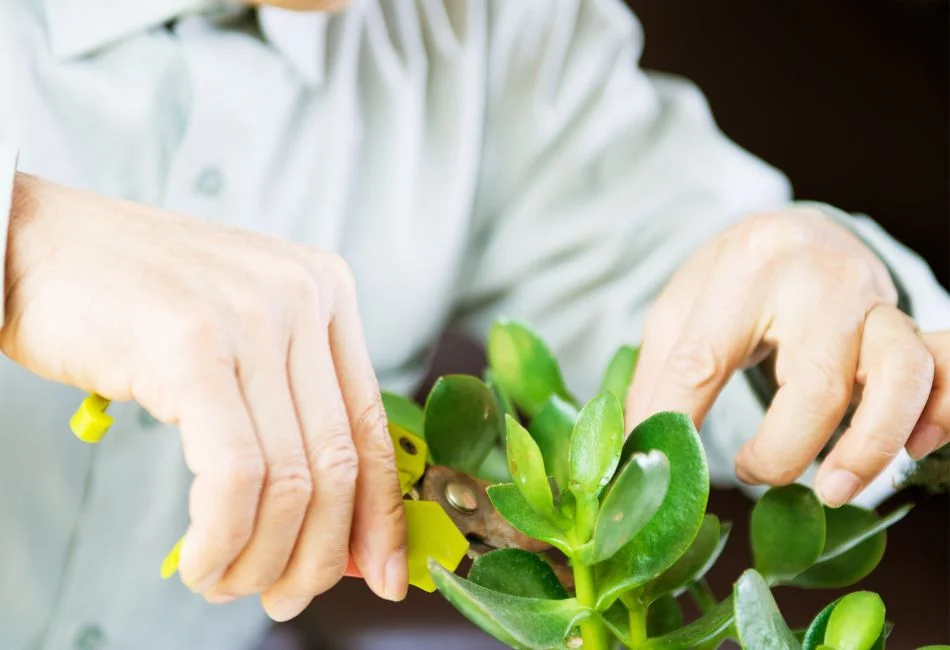To derive all the benefits of indoor plants, you are responsible for taking proper care of them. Essentially, your attention to your indoor plants can help them serve you better, both health-wise and aesthetically.
Six tips for growing and taking care of your indoor plants are:
- Proper watering techniques
- Creating the right lighting conditions
- Maintaining appropriate temperature and humidity levels
- Taking care of the nutritional needs of the plant
- Pruning, grooming, and repotting
- Pest control and disease prevention
Growing and taking proper care of your indoor plants can improve the air quality in your space aside from maintaining its core benefit of beautifying the area. During the cold seasons, indoor plants can help increase a room’s humidity level significantly. Again, consider indoor plants if some empty walls and spots in your room need filling.
Let’s take a detailed look at the abovementioned tips for caring for your indoor plants.
How To Grow And Take Care Of Your Indoor Plants
Here are a few pro tips to help you maintain your indoor plants and enjoy their full benefits.
1. Proper Watering Techniques

You must know the proper watering technique for your indoor plants to thrive. The appropriate watering technique will ensure that each plant receives the exact amount of water it needs to grow. An adequate amount of water will also help the plants to transpire and photosynthesize effectively. Generally, you need to ensure that you are watering the soil at room temperature and directly at the base of the plants. Make sure not to overwater, as that can drown the nutrients in the soil and cause your plants to die quickly.
· Determining The Watering Needs Of Different Indoor Plants
Knowing the proper watering techniques for your indoor plants also comes with identifying the watering needs of the different plants. Research your plants and seek advice from a gardener or florist.
While some plants require that the soil is always moist, with others, you may have to wait till the soil is arid before watering again. With this, you can keep a close eye on the soil so you can tell when it dries out or is about to.
· The Significance Of Drainage And Potting Soil Selection
After watering your plants, any excess water must be drained from the soil to avoid the roots being drenched in too much water, leaving them at risk of root rot. As such, if your pot does not have holes beneath, as advised, you might want to use a plastic nursery pot with holes inside to empty the excess water from the pot after watering. You can also make your holes beneath the pots before planting in them.
· Watering Techniques And Frequency For Different Plant Species
How often you water your indoor plants depends on the species, size of the pot, and atmospheric conditions, especially in your living room. The humidity and temperature level in your living room, which the weather would largely dictate, can give you a fair idea of how frequently or otherwise you should water your plants. Knowing this will ensure that your plants do not suffer due to seasonal changes.
· Recognizing Signs Of Overwatering And Underwatering
A simple way to check if your soil has enough water is to stick a finger about an inch down into the soil. If the soil feels moist, then you are good. However, if you feel dryness, it is time to water. This simple test can also help detect overwatering and underwatering.
Some signs of overwatering include wilting, yellowing leaves, leaf drops, fungus or mold growth, and root rot. On the other hand, if your plant is underwatered, you may notice dry soil, wilting, yellow or brown leaves, leaf curling, and stunted growth.
2. Creating The Right Lighting Conditions

· Natural Light Vs. Artificial Light Options
Like outdoor plants, indoor plants need natural light to thrive and make their food through photosynthesis. This mainly implies access to sunlight. So, in cases where sunlight is not sufficient or limited, artificial lighting options like full-spectrum grow lights designed for plants can be used as a supplement.
Different plants have different sunlight needs to you have to know. Sometimes it helps to arrange indoor plants based on their sunlight needs to help with this.
· Placement And Rotation Of Plants
Every indoor plant has a preferred amount of lighting they need. Once you have this figured out, you can decide where to place which plant so that they receive the right amount of lighting they need.
For instance, if a plant needs bright light to thrive, position it such that the sunlight hits it directly, or your artificial lighting is placed such that it can augment the natural light to aid growth. Once seasons change, you can swap the position of your indoor plants so they continue to flourish.
3. Maintaining Appropriate Temperature And Humidity Levels

· The Role Of Humidity And Temperature For Indoor Plants
Like outdoor plants, indoor plants need a specific humidity and temperature level to thrive. Identify the average temperature your plants need to survive and ensure it is constantly provided. Also, the right humidity level must be maintained at all times.
When humidity levels are low, spray some water on the leaves to ensure your plants do not get dry. A conducive humidity and temperature will ensure that your plants grow properly.
· Ensuring Proper Air Circulation And Ventilation
Proper aeration is also required to ensure your indoor plants grow properly. The first step is to open windows and doors when the weather allows fresh air in. Otherwise, you can also use fans to ensure a well-ventilated living room. Also, ensure that your indoor plants are not overcrowded to ensure the free flow of air.
4. Nutritional Needs Of Indoor Plants And The Use Of Fertilizers

Fertilizers are essential for the growth of indoor plants because as you keep watering the plants, the nutrients in the potted soil or mix get washed away. Fertilizers help replace the lost nutrients so your plants can grow well.
· Understanding The Essential Nutrients Required By Indoor Plants
Indoor plants need micronutrients, secondary nutrients, and macronutrients. Understanding the role of these categories of nutrients in the growth of your indoor plants is crucial as these plants will have individual nutrient requirements, so you may need to provide those specific nutrients accordingly.
· Different Types Of Fertilizers And Their Application Methods
Regardless of the type of fertilizer, read the manufacturer’s instructions before applying it. That said, water-soluble fertilizers, slow-release fertilizers, granular or pellet fertilizers, organic fertilizers, liquid fertilizers, and foliar fertilizers are available on the market.
Water-soluble fertilizers are powders or granules that need to be diluted with water, poured into a watering can preferably, and used to water the soil. With slow-release fertilizers, you mix them into the soil, allowing them to release the nutrients to the plants when needed gradually.
Fertilizers that come in solid granules or pellets are called granular or pellet fertilizers. With these, you need to scatter the pellets around the base of the plants and use a garden fork to turn the soil to mix them in. Then, water the soil well.
Organic fertilizers are compost, manure, or plant materials and can be spread at the base of the plant or mixed into the soil and watered after application.
Though they come in liquid, liquid fertilizers must be diluted with water before watering the soil or spraying the leaves. Lastly, foliar fertilizers are diluted and applied to the leaves of plants by spraying them.
· Fertilization Schedules And Precautions To Avoid Overfertilization
Firstly, any fertilizer applied to your indoor plants’ leaves should be done when the weather is not so warm. This will prevent rapid evaporation and leaf burn. Please keep track of when you apply fertilizers to your soil so you can space them out appropriately.
Also, depending on the growth stage of your plants, they will require different nutrients to thrive, which you must know. At specific points, you need to flush out your soil with water and replenish the soil with fertilizers to ensure the continued growth of your indoor plants. Above all, ensure you mix and apply the fertilizers correctly and according to the manufacturer’s instructions.
5. Pruning, Grooming, And Repotting

To keep your indoor plants looking pretty and healthy, you must sometimes prune, groom, and repot them.
· Importance Of Pruning For Plant Health And Aesthetics
By pruning your indoor plants, you cut off dead or diseased leaves and branches, allowing the plant to flourish. Pruning keeps the plants in good health and looking nice and fresh. Pruning also helps you to control the size and shape of your indoor plants and encourages the growth of new parts that may have been pruned.
· Tips For Grooming And Maintaining The Appearance Of Indoor Plants
Grooming of your indoor plants goes beyond pruning. It extends to gently wiping the leaves with a damp cloth to clean dust and sometimes polishing them. Grooming also includes watering and nourishing the soil to continue supporting plant growth. These help maintain the appearance of your indoor plants.
· When And How To Repot Indoor Plants For Proper Growth
It is time to repot your indoor plants when they become too big for their current pots, or you realize through a soil test that the nutrients in your potting mix have been washed away. When plants outgrow their pots, their roots stick out of the drainage holes. You will also realize that the plant’s growth pattern has slowed down.
To repot, get a new pot and fill it with fresh potting mix. Now, gently transfer the plants from the old to the new pot and add more potting mix as desired. Gently press down the potting mix to make the plant stand securely. Now, water the plant but avoid exposing it to sunlight abruptly.
6. Pest Control and Disease Prevention

Effective pest control and disease prevention cannot be overlooked if you intend to keep indoor plants.
· Common Pests That Affect Indoor Plants
Indoor plants can be affected by aphids, mealybugs, spider mites, scale insects, fungus gnats, whiteflies, thrips, broad mites, cyclamen mites, sowbugs, and pillbugs. These pets attack various parts of the plants and slowly eat them away.
· Recognizing Signs Of Plant Diseases And Taking Preventive Measures
Wilted leaves, leaf spots, yellowing leaves, blight, powdery mildew, root rot, stem canker, and stunted growth may indicate a diseased plant. Using a sterile potting mix from the onset can help prevent some of these diseases.
Also, proper care and maintenance of these plants are vital, but avoid cross-contamination by washing your hands and tools after caring for one plant before moving on to the next. Again, if possible, acquire disease-resistant plants and prevent overwatering.
· Natural And Chemical Methods Of Pest Control
One natural method of pest control is the introduction of insects like ladybugs, lacewings, and predatory mites to feed on common pests like aphids and spider mites. Other natural methods include spraying diluted neem oil, insecticide soap, horticultural oils, and diatomaceous earth on the affected plant or the soil around the plant.
On the other hand, there are chemical pest control methods, including synthetic pesticides, systemic pesticides, baits, and residual sprays. While using these, however, use the appropriate protective gear and ensure proper ventilation not to harm other living things.
Conclusion
For your indoor plants to continue being healthy and visually appealing, you must give them proper care. Apart from ensuring they are watered regularly and properly, they must be pruned, groomed, and repotted when necessary.
There may come times when the nutrients in the soil of these indoor plants may have depleted. This is when you need fertilizers to revamp the growth of your plants. In cases where your plants show signs of disease, you can employ natural and chemical methods to rid the plants of the pest.
Once you commit to having indoor plants, be prepared to take care of them or have them taken care of so that they remain healthy and pretty.

